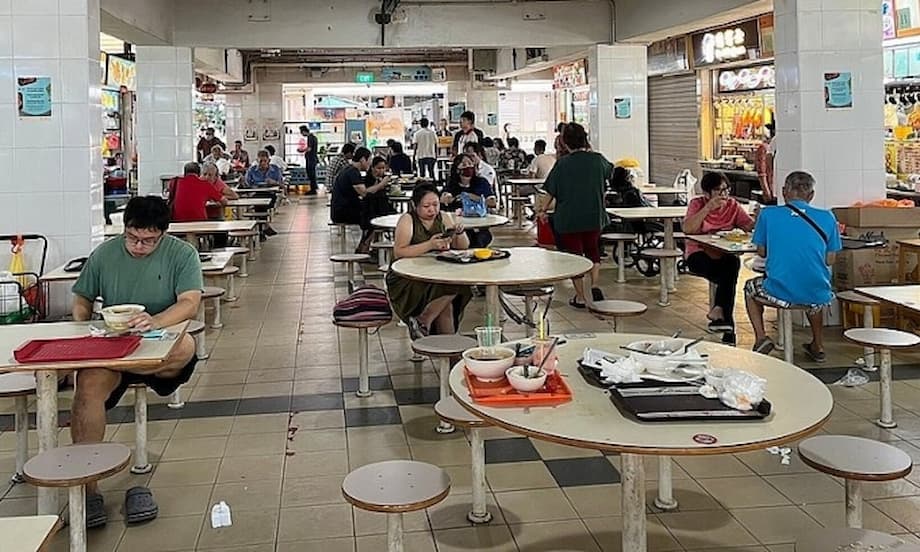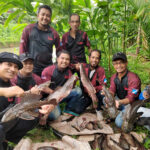Why multiple hawker centres will close in late 2025
Singapore will temporarily close six hawker centres for two to three months of repairs and redecoration from late September through December 2025. Four centres, Toa Payoh Lorong 8 Market and Hawker Centre, Ang Mo Kio 628 Market and Food Centre, Boon Lay Place Market and Food Village, and Haig Road Market and Food Centre, are scheduled to shut on September 22. Berseh Food Centre at Jalan Besar will follow on September 29, and Circuit Road Hawker Centre on October 1. The National Environment Agency manages these facilities and runs a program of periodic upgrades to keep them safe, clean, and welcoming. The schedule is part of that effort.
Hawker centres sit at the heart of daily life and national identity. UNESCO recognises Singapore’s hawker culture as Intangible Cultural Heritage. The city ranks highly among food lovers in Asia and around the world. Time Out placed Singapore third among street food cities in Asia this year, behind Penang and Hanoi. Readers of a global travel magazine selected Singapore as the only Southeast Asian city in a recent top ten list for food worldwide. The temporary closures will be felt by regulars and visitors, yet the works aim to preserve the social energy of hawker dining while updating facilities for the years ahead.
Which centres are affected and when they reopen
- Toa Payoh Lorong 8 Market and Hawker Centre (Block 210 Lorong 8 Toa Payoh): closes Sep 22, reopening Nov 24.
- Ang Mo Kio 628 Market and Food Centre (Block 628 Ang Mo Kio Ave 4): closes Sep 22, reopening Dec 15.
- Boon Lay Place Market and Food Village (Block 221A/B Boon Lay Place): closes Sep 22, reopening Dec 21.
- Haig Road Market and Food Centre (Block 13/14 Haig Road): closes Sep 22, reopening Dec 22.
- Berseh Food Centre (166 Jalan Besar): closes Sep 29, reopening Dec 28.
- Circuit Road Hawker Centre (Block 79/79A Circuit Road): closes Oct 1, reopening Dec 31.
NEA conducts routine spring cleaning throughout the year, which often lasts one to three days. The closures above are longer, two to three months, because they involve repairs and redecoration that require more extensive work. Official notices continue to appear on the agency’s announcements page and Singapore’s open data portal, which list both short cleaning closures and multi month upgrades.
How the upgrades will change the dining experience
Deep refresh works usually deliver practical improvements that diners notice right away. Fresh floor tiles and waterproofing reduce slips during wet weather. Seating is repaired or replaced. Paintwork is renewed across dining areas and corridors. Toilets receive maintenance or upgrades. Ventilation and lighting are improved for comfort during hot afternoons. In some centres, layouts are tweaked to open up walkways and seating, making movement easier for families and seniors. Stall infrastructure, such as power points, drainage, exhaust systems, and fire safety features, may be repaired or updated. Digital tools also play a role. NEA encourages cashless payment options, better queue management, and centralised dishwashing setups that keep tableware clean and help stall teams work faster and safer. These changes support consistent hygiene, reduce clutter, and keep table turnover steady during peak periods.
A recent example helps show the scope. Tiong Bahru Market, a landmark venue, closed from mid April to mid July 2025 for repair and redecoration after its previous refresh in 2017. Works included new tables and stools, fresh floor tiles, repainting, waterproof materials for the carpark, and enhanced greenery in the courtyard. The agency also targeted improvements to toilets, lighting, and ventilation as part of periodic refresh cycles that generally take place every six to eight years. Individual sites differ, and not every centre receives the same package of works. Yet the goals are consistent. Maintain hygiene and comfort, support hawker livelihoods with reliable infrastructure, and preserve the familiar social atmosphere that makes these centres a daily destination for residents.
How often do these deep refreshes happen
Major repairs and redecoration take place on a cycle of several years, often around the six to eight year mark for large centres, while routine cleaning happens multiple times a year. The schedule spreads works across the island to limit widespread disruption and gives stallholders time to prepare.
Impact on hawkers and customers
For hawkers, a multi month closure means a pause in daily income. Some take a well earned break. Others may pop up at another centre if a temporary stall is available. NEA has offered different forms of support at different times. During the Tiong Bahru Market refresh earlier this year, stallholders had rent waived during the closure and rents were not raised because of the works, and representatives were consulted on timing and scope. Arrangements can vary by site and circumstance, so stall operators should rely on official notices from the agency for site specific details and next steps. Preparation matters. Stallholders who plan to relocate temporarily usually share updates on stallfront posters or on social platforms.
For customers, the impact arrives in daily routines. Office workers and families who rely on nearby centres for lunch or dinner will need to adjust plans. Nearby venues tend to see heavier footfall when a large centre closes. Expect longer lines at peak periods. Some signature stalls may pause service completely until reopening. Others may relocate for a short stint or pivot to delivery. Watch for notices on the stallfront. Many operators share updates on Facebook, Instagram, or WhatsApp groups, which can be useful when tracking new hours, changes to menus, or temporary addresses.
Practical tips for regulars
- Check the NEA announcements page and the MyEnv app before you go.
- Follow favourite stalls on social media for relocation or reopening notices.
- Visit during off peak hours to avoid queues at nearby centres.
- Consider weekday breakfast or late lunch if your schedule allows.
- Carry both cash and digital payment options, as some stalls may adjust systems during works.
- For seniors or families with strollers, confirm lift access and seating at alternative venues.
Alternatives while popular centres are shut
Singapore’s hawker network is dense, so there are many options while the six centres are closed. In the city area, Maxwell Food Centre, Chinatown Complex Food Centre, Lau Pa Sat, Amoy Street Food Centre, and Newton Food Centre offer a broad mix of local classics and niche specialties. In the east, Old Airport Road Food Centre and East Coast Lagoon Food Village remain favourites when not on short cleaning cycles. In the north and west, venues such as Yishun Park Hawker Centre, Taman Jurong Market and Food Centre, and Jurong West Hawker Centre provide a wide spread of affordable meals. Newer options add variety too. Punggol Coast Hawker Centre brings about 40 stalls and familiar names to the north east. The air conditioned Hawker Street at Orchard curates well known local brands for shoppers who prefer a mall setting.
Food guides signal that quality remains high across the island. The MICHELIN Bib Gourmand Singapore 2025 selection features many hawker stalls that serve strong value. New additions include Ji Ji Noodle House at Hong Lim Market and Food Centre, Lao Fu Zi Fried Kway Teow, Nam Sing Hokkien Fried Mee, and To Ricos Kway Chap at Old Airport Road Food Centre, and Song Kee Teochew Fish Porridge at Newton Food Centre. More than seventy percent of Bib Gourmand places are hawker stalls, a reminder that the city’s most memorable meals often come from family run kitchens in communal food halls.
Visitors and residents can verify which centres are open by checking NEA’s official updates. The announcements page lists current closures, reopening dates, and short cleaning windows. You can view that page here: NEA hawker centre announcements.
Cleaning schedules versus multi month upgrades
Short cleaning closures are common and usually last one to three days. They help keep stalls, drains, and shared areas clean and safe. NEA publishes monthly schedules for these short pauses, and the numbers can be high during school holiday periods. For instance, September 2025 included dozens of sites scheduled for routine cleaning blocks. These closures are different from the two to three month repair and redecoration projects now underway at the six centres above.
The national open data portal provides a consolidated view of hawker centre closures for cleaning, repairs, and redecoration. The dataset lists start and end dates, site addresses, and notes about the nature of works. This is useful for planning lunch runs and weekend eating trips across the city. You can browse the dataset here: Dates of Hawker Centres Closure.
Key dates and what to expect on reopening
Reopenings are set across late November and December. Toa Payoh Lorong 8 is due back on November 24. Ang Mo Kio 628 on December 15. Boon Lay Place on December 21. Haig Road on December 22. Berseh Food Centre on December 28. Circuit Road on December 31. Timelines can shift if works face weather or supply challenges, so it helps to check the official page for any adjustments closer to the dates.
When doors open, patrons can expect refreshed surfaces, better lighting or ventilation, spruced up seating, and incremental improvements behind the scenes. Stallholders may also adjust menus or operating hours as they settle back in. The aim is steady service, cleaner spaces, and an experience that protects the charm of communal dining while making it easier to eat well and affordably.
Key Points
- Six hawker centres will close for repairs and redecoration from late September to December 2025.
- Four centres shut on Sep 22: Toa Payoh Lorong 8, Ang Mo Kio 628, Boon Lay Place, and Haig Road.
- Berseh Food Centre closes Sep 29 to Dec 28. Circuit Road Hawker Centre closes Oct 1 to Dec 31.
- Reopenings are scheduled between Nov 24 and Dec 31, depending on the site.
- Upgrades typically include refreshed floors, paint, seating, toilets, lighting, and ventilation, plus support for digital payments and efficient dishwashing.
- Hawker culture is recognised by UNESCO, and Singapore remains a top destination for street food and value dining.
- Short cleaning closures continue across other centres and usually last one to three days.
- For the latest closure dates, check NEA’s announcements and the national open data listing.




